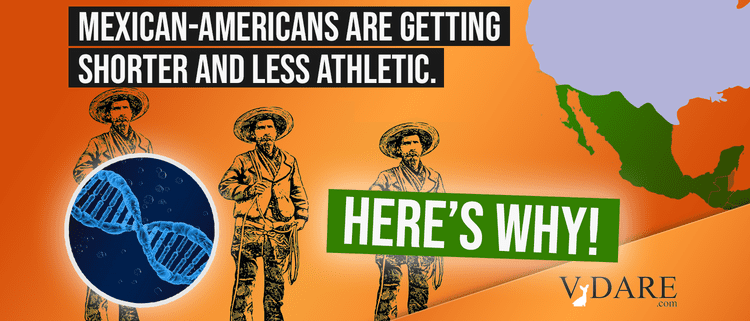


01/18/2020

From BioRxiv:
Hispanics/Latinos are a diverse one group of admixed populations with African, European, and Native American ancestries. They remain understudied, and thus little is known about the genetic architecture of phenotypic variation in these populations. Using genome-wide genotype data from the Hispanic Community Health Study/Study of Latinos, we find that Native American ancestry has increased over time across Hispanic/Latino populations, particularly in Mexican Americans where Native American ancestry increased by an average of ∼20% over the 50-year period spanning 1940s-1990s. We find similar patterns across American cities, and replicate our observations in an independent sample of Mexican Americans. These dynamic ancestry patterns are a result of a complex interaction of several population and cultural factors, including strong ancestry-related assortative mating and subtle shifts in migration with differences in subcontinental Native American ancestry over time. These factors have shaped patterns of genetic variation, including an increase in runs of homozygosity in Native American ancestral tracts, and also influenced the genetic architecture of complex traits within the Mexican American population. We show for height, a trait correlated with ancestry, polygenic risk scores based on summary statistics from a European-based genome-wide association study perform poorly in Mexican Americans. Our findings reveal temporal changes in population structure within Hispanics/Latinos that may influence biomedical traits, demonstrating a crucial need to improve our understanding of the genetic diversity of admixed populations.
T
hey find that Mexican Americans born in the 1930s averaged 43% Native Americans vs. 54% Native American for Mexican Americans born in the 1990s, based on the smoothed graph above, although perhaps the peak Amerindian ancestral percentage was those born in the 1980s.
This helps explain the curious fact that Mexican-Americans used to be included more in the ranks of top athletes back when they were less numerous. For example, consider Southern California-born Pancho Gonzales, the world’s top pro tennis player of the 1950s, and Anthony Munoz (right), often ranked the best offensive lineman in NFL history. San Diego’s Ted Williams, probably the best baseball hitter of all time, was half-Mexican. (Tony Gonzalez of Southern California might be the best NFL tight end of all time but I don’t think he’s Mexican — but in any case I still want to see a reality TV show where he hangs out at Jeff Bezos’s house to toss the football around with his son, Bezos’s new stepson.)
I don’t know the specifics of the study of Hispanics (sample size a little over 10k) used in this study, but the U.S. government doesn’t let you pick more than one ethnicity the way you can pick more than one race on the Census. You either pick Hispanic or Non-Hispanic, not both. Presumably, this means that individuals of some but not high degree of Mexican descent don’t identify as Mexican-American. For example, Ted Williams didn’t. These days there are rewards for identifying as Latino, but I’m sure some people who are 1/4th or 1/8th don’t bother. This would cause highly European people to tend to drop out of the Hispanic pool.
Another thing is that Mexican-Americans used to be Anthony Quinn-types from Northern Mexico, which was a desert largely unpopulated until irrigation techniques developed in the later 19th Century, so it was populated by more European individuals. In contrast, recent immigrants from Mexico have tended to be from ancient southern Mexican corn-growing villages disrupted by NAFTA.
And new Mexican immigrant women tend to have high fertility in, roughly, their first decade in the U.S., only noticing after they’ve had a passel of kids here that raising children in the U.S. is very expensive.
It’s also likely that there is a height gradient among Native Americans. The tallest, such as the Blackfeet, appear to be up around the Canadian border, with the shortest in North America down in Central America.